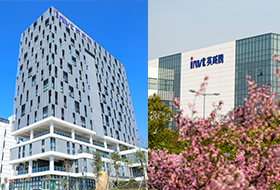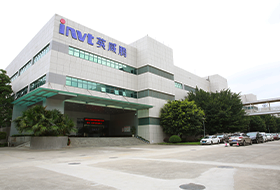How is a data center built?
█ Data center service provider
Although the data center is an infrastructure, it is not completely state-owned. It can also be private, built and operated by private companies. However, according to national regulations, an Internet data center operating license is required to provide data center services.
Generally speaking, data center service providers are divided into three types of companies.
The first category is telecom operators. They are large state-owned enterprises with strong financial strength, a large number of talents, a lot of resources in their hands, and rich experience in infrastructure construction. They are the leading force in the domestic data center market.
The second category is cloud computing service providers. These service providers themselves carry out cloud computing business, so they build a large number of data centers by themselves or jointly. They are very professional in the construction and operation of data centers, and have strong technical strength.
The third category is third-party service providers specializing in data centers. They provide services to customers by building their own data centers or renting operators' data centers. They are not limited to the network and geographical restrictions of a single telecom operator, and can provide relatively balanced network egress. At the same time, their services are more flexible, and they are good at providing customized services according to the needs of customers.
According to different sales methods, third-party data centers are divided into retail data centers and wholesale data centers.
█ Data center construction
The construction of a data center is a highly specialized project that requires strong resource integration capabilities. In chronological order, data center construction inevitably includes a series of professional projects as follows:
1. Site selection;
2. Land, electricity, water, energy assessment, environmental impact assessment, etc.;
3. Feasibility study
4. Project approval;
5. Schematic design and construction drawing design;
6. Bidding and procurement of general contracting of engineering construction, and supervision and bidding of procurement;
7. The division of professional subcontractors, procurement of engineering subcontractors and procurement of major equipment;
8. Civil engineering;
9. Electromechanical installation;
10. Equipment debugging;
11. Acceptance and delivery.
█ What are PPP, BOT, EPC?
The traditional engineering construction mode is very complicated for the owner. In order to facilitate rapid construction and delivery, there are some new project management modes, including PPP, BOT, agent construction mode, project management mode, etc.
PPP mode, that is, Public-Private-Partnership (government and social capital cooperation), the government adopts a competitive method to select social capital with investment, operation and management capabilities, and the two parties sign a contract in accordance with the principle of equal negotiation, and the social capital provides public services. The public service performance evaluation results pay consideration to social capital.
The second is the BOT model, that is, Build-Operation-Transfer (Build-Operation-Transfer), which is a way for private enterprises to participate in infrastructure construction and provide public services to the society.
For the construction of data centers, the most popular ones are agent construction and EPC.
The agent construction model, as the name suggests, means that the owner invites bids to find a professional agent construction unit to be responsible for the investment management and construction of the project. After completion, it will be handed over to the owner, who will pay a certain percentage of management fees.
The reputation of EPC is even greater. Its full name is called Engineering-Procurement-Construction, which means "design-procurement-construction".
It is a general contracting mode. The owner contracts the construction project to the general contractor, and the general contractor undertakes the design, procurement, and construction of the entire construction project, and comprehensively monitors the quality, safety, construction period, and cost of the contracted construction project. Responsible.
In the end, the general contractor submits to the construction unit a construction project that conforms to the contract, satisfies the function of use, meets the conditions for use, and has passed the completion inspection and acceptance.
In terms of cost, although EPC is not necessarily the cheapest, but adopting the EPC model, the cost risk of the owner will be much smaller. After bidding for the EPC general contract, the owner's expenses are expected. The cost risks caused by design, procurement and coordination errors are borne by the EPC general contractor.
Large-scale general contractors can comprehensively mobilize resources, collect sporadic equipment procurement needs of projects across the country, conduct centralized procurement negotiations, and control prices and supply chains through scale, so as to control the total investment and achieve low quotations for EPC contracts. Realize the win-win cooperation between the owner and the EPC general contractor.

 networkpowersales@invt.com.cn
networkpowersales@invt.com.cn



























